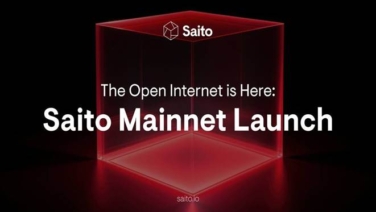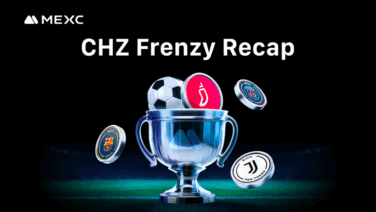Since 2017, the Ethereum ecology has been maturing, which enlightened us that blockchain is different from pure open-source software. Rather, it links the spirit of free and open-source development with incentives, with a template to promote the expansion of the market and community. A more representative example would be Filecoin. In 2014, Juan founded Protocol Labs and led the R&D team to build the InterPlanetary File System (IPFS), which includes a series of underlying protocols. Although with distinctive technological superiorities, IPFS is held back by its disadvantaged user base. Juan originally hoped to use Ethereum to build a storage incentive layer, thus Filecoin was born. SINSO, as a Web3.0 infrastructure focusing on distributed cache network and data programmability, is inspired by Filecoin. While with its own positioning, SINSO has an economic model design that differs from Filecoin.
Filecoin offers a blockchain-based market that is expected to revolutionize the global storage economy, providing a new and secure channel for everyone to buy and sell storage space. Adopting a grand narrative, Filecoin elaborated in its island economy model the interactions between five different participants: users, developers, token holders, ecological partners, and storage providers. Of course, with the improvement of the retrieval market, there will be many more characters, since storage has a much more complicated system than Defi’s on-chain financial assets. SINSO believes that Filecoin has developed a global ultra-large-scale storage provider network under its current positioning, but the effective storage space utilization is less than 5% of its total. In May 2021, Filecoin announced that it had completed the storage capacity construction, and had completed the phase-1 development of the following economic effect model:
| REVENUE | COSTS |
| Fees charged to end users +(Block rewards * FIL price) | Hardware + Sales and marketing + Labor power + Expenses + Floor spaces +Interest on borrowed FIL |
First and foremost, SINSO is to build a distributed secondary cache network. In the Revenue/Costs model, we have many ideas similar to Filecoin. Yet since we do not need a complex space-time proof mechanism, the incentives for building distributed cache network nodes in the first stage will be much simplified. After the network reaches 2,000 nodes, we will distribute revenue to node miners. There are some rules for reference, as follows:
| Incentive Release Rule | Mining reward release rules: 30% will be released directly after each mining; 70% linearly vesting in 18 periods on each 11th day; and the release will be completed in a total of 180 days. |
| Punishment Mechanism | 2-4 hours prohibit from mining or acquiring income if you disconnected but reconnect successfully;If a node is running normally with staking but does not generate income for 5 hours, it will be kicked offline. |
| Verifier, Upload Node, Storage Node | Verifier node: Miners obtain 30% of income, guarantors 70%Upload node: Miners – 20%; Guarantors – 80%Storage node: Miners – 60%; Guarantors – 40% |
| Staking | Staking for Storage node: 200 SINSOStaking for Upload node: 10,000 SINSOStaking for Verifier node: 2,000 SINSO |
In the first stage of SINSO ecological construction, 30,000,000 tokens will be needed for consumption, which accounts for 50% of the total amount of Mining Pool tokens. This has many similarities with Filecoin, but more importantly, there are many differences. For example, to allow more token holders to participate in the ecological construction, we have added the role of Guarantor. Actually, in Filecoin’s ecological construction, a large number of currency holders have participated in the storage network building through “joint mining”. In this regard, SINSO defined the role of “Guarantor”, so that ecological roles can cooperate more closely. SINSO built a simplified “loan” market, and the counterpart of FIL is upgraded through FVM or third-party developers.
Since we are not oriented to the enterprise-level persistent storage layer, the requirements set in terms of SLA are not too high, and the relatively loose slashing mechanism for collateral did not refer to FIL.
When we have completed phase-1 ecological construction, we will soon usher in the second phase of construction, which is the implementation of the application ecology. So next, another 50% of the total amount of Mining Pool tokens will be used for the construction of Dapp Cube and SINSO DAC. The emphasis on incentives for Web3.0 ecology is the biggest difference between SINSO and other distributed storage networks. Given the construction of the first phase is based on the accumulation of hardware and investment, the time cycle it takes is often shorter than expected, so the token release curve of our basic network consists of fast release in the early stage and slow release in the later stage – as shown below:
It will take 10 years to build the basic network, of which the token incentive model will not be immutable but rather with gradual fine-tuning – Just like FIL has added a token incentive model during the evolution of the search network.
Regarding ecological construction, we mentioned two important components, DAPP Cube and SINSO DAC, which are also the core of SINSO’s future development. Combining ecological construction incentives with token incentives, the ecological construction of SINSO is different from that of other blockchains, which constitutes the important characteristic of SINSO differentiating it from other blockchains. We summed up the development history of blockchain in the past five years and found that many projects are not friendly to developers, including Ethereum, thus projects in the Layer2 racetrack have sprung up. But Layer2 is not the ultimate solution. Rather, more attention should be drawn to developers. Usually, developer and storage providers are independent roles, and in many cases, there is no intersection. This leads to rather fast basic network construction while the application ecosystem expansion is slow. A typical example would be Chia – Though with great technology, the lag of the application ecology would result in the imbalance of the economic model. In short, solely focusing on infrastructure construction without considering the application ecology from a macro perspective will lead to plenty of problems. That’s why we launched DAPP Cube.
DAPP Cube has the dual role of developer community + developer/creator economic ecology. We encourage more developers to contribute directly so that ecological participants include not only hardware providers and investors. Any ecology with a high market value, such as that of BSC or Ethereum, undoubtedly has many developers, so that tokens can be fully circulated in the ecology. But we know the perfection of the developer community needs long-time accumulation. And supportive education and promotion also require patience. That is why DAPP Cube will directly reward SINSO developers, which would demand 1) Creation of a developer account; 2) Upload of related components and works; 3) Delivering rewards based on usage and citations. For specific details, please refer to “Web3.0 Software Architecture”.
About SINSO DAC, we can regard it as an application subset of Filecoin’s FVM and the AmStar chain. It emphasizes data programmability for the application layer, such as the establishment of a data-based DAO architecture (Data Dao). SINSO DAC can also be included in the incentive rules of DAPP Cube. As an open-source software architecture, its establishment will not solely rely on the SINSO R&D team.
We can summarize the components of the SINSO incentive framework as follows:
| Incentive Framework Components | Function | Category | |
| Basic Nodes | Complete basic network construction | Internal incentives for storage network | |
| Effective Data Nodes | Increase incentives for effective data nodes | Internal incentives for storage network | |
| SINSO DAPP Cube | Build an open platform for developers | Incentives for developer ecology | |
| SINSO DAC | Data-oriented programmable ecology | Incentives for developer ecology |
SINSO is considering training a group of Web3.0 programmers in Mumbai and Delhi, India. Solving their worries is conducive to the implementation of our economic model. People in low-income areas and extremely economically unbalanced areas are more likely to use Web3.0 to change their lives. For example, young people in Nigeria are full of impulses and innovation, but they need the “soil” that allows them to continue to create. We can see that incentivization for developer-oriented application ecology is a unique part of SINSO, which can further the close integration of developers and the application ecology. We also believe that excellent programmers are individuals or small teams, just like John Carmack, the founder of Thor 2, said that as long as there is a computer and a refrigerator full of food, the world can be changed. Of course, this applies to programmers 30 years ago who were talented and passionate, and now they can fully express their creativity in a faster way. We not only need individual talented programmers, but we also need to build soil that encourages talented programmers to develop.
- Website: https://www.sinso.io/
- Twitter: https://twitter.com/sinsonetwork
- Telegram/: https://t.me/sinsonetwork/
Disclaimer: TheNewsCrypto does not endorse any content on this page. The content depicted in this press release does not represent any investment advice. TheNewsCrypto recommend our readers to make decisions based on their own research. TheNewsCrypto is not accountable for any damage or loss related to content, products, or services stated in this press release.








